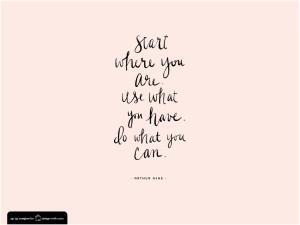Making the Case for Board Education – With Heavy Hitter Help
Posted: April 1, 2014Okay, so I don’t mean to be an I-told-you-so, but I cheered at recent news that GuideStar, the respected information source on nonprofits, is collaborating with BoardSource, the expert on all things board-related, to include “essential board leadership practices” in GuideStar’s organizational profiles.
respected information source on nonprofits, is collaborating with BoardSource, the expert on all things board-related, to include “essential board leadership practices” in GuideStar’s organizational profiles.
Nonprofits will have the option to answer questions about their board orientation process, system of board education and other governance details. This information may not be required, but given GuideStar’s reputation for helping would-be donors evaluate nonprofits before they give – my prediction – the pressure to provide it will grow.
My source, an article in Nonprofit Quarterly, concludes with the same expectation: “There’s no doubt GuideStar and BoardSource intend to keep raising the bar in terms of accountability by inviting nonprofits to publicly share information about how their boards work.”
Speaking from, yes, my soapbox: it’s about time. Board education is my passion precisely because I know it matters. That’s coming from me as a board member and nonprofit strategist who holds a BoardSource Certificate of Nonprofit Board Education. I’m also a community member of nonprofit organizations, including those with terrific boards and, over the years, a few cautionary tales of the fallout when boards are not adequately prepared to perform their tasks.
Road to Good Intentions
Let me make one thing abundantly clear: I believe every board member assumes the role with the best of intentions. I see civic interest, commitment to a cause, desire to further an organization as prime reasons that individuals agree to sit on a board.
But, at the risk of repeating myself, I also see a good deal of naiveté among new board members. Maybe it’s the years of Hollywood movies that show boards assembled solemnly in wood-paneled rooms ticking simplistically through agendas – or all acquiescing to the board leader in whatever comedy or drama is at stake. That sounds trite but, really, what other pictures of board service do the uninitiated get?
Of course, nonprofit boards don’t work like that. Governance in this day and age is complex. Every board member has to fully engage. While initial 2013 fundraising figures I’ve read show gains in giving, that’s in comparison to the deep years of the recent recession. So a board’s work in the area of donor relationships still requires a set of nuanced skills that aren’t always second nature.
Organization Makes the Call
That’s why I applaud the GuideStar/BoardSource alliance and the push to make it an organizational responsibility to explain how a board works. Bottom line, it is the organization that must institute a process for board orientation and education – and require participation by all board members. Previous board experience is not a guarantee a new board member arrives ready to go and govern. Besides, every organization is distinct. Surely no nonprofit would agree that one board member fits all. Yet when a nonprofit does not insist on orienting and educating a board to its own mission and vision, isn’t that what is implied?
Read about the GuideStar/BoardSource initiative. http://bit.ly/1exoxBg
Interested in exploring board education workshops? Let’s talk.

